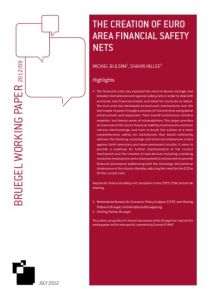Join getAbstract to access the summary!

Join getAbstract to access the summary!
Michiel Bijlsma and Shahin Vallee
The Creation of Euro Area Financial Safety Nets
Bruegel, 2012
What's inside?
A contradiction beats at the euro zone’s heart: can it instill confidence while limiting member states’ liability?
Recommendation
The European Union has lurched from crisis to cure and back to crisis again, without seeming to resolve its prevalent institutional shortcomings. The measures taken to date are undoubtedly insufficient for the long-term stability of the euro zone. Scholars Michiel Bijlsma and Shahin Vallee tread on now-familiar ground in their worthwhile summary of the situation at year-end 2012 as they outline the need for political and economic agreement on reform. They also provide solid recommendations for the way forward. getAbstract recommends their insights to policy makers, executives and observers involved in the euro scene.
Summary
About the Authors
Michiel Bijlsma and Shahin Vallee are visiting fellows at Bruegel, an economic think tank based in Brussels.

















Comment on this summary